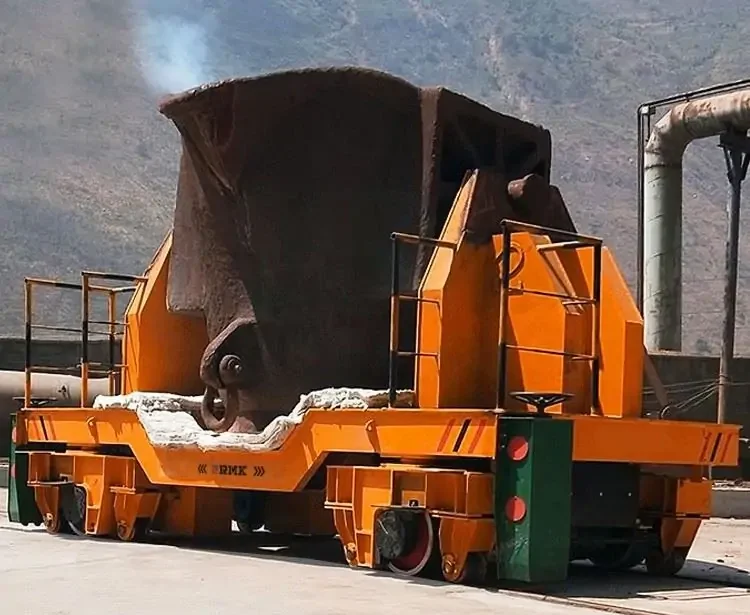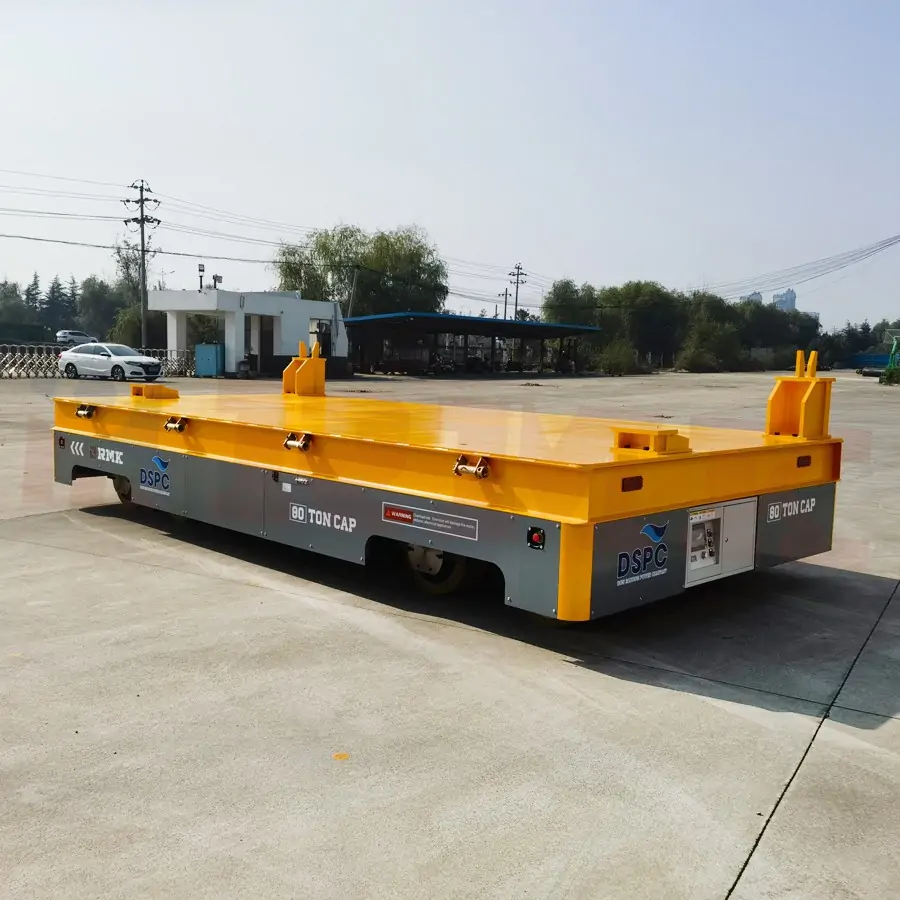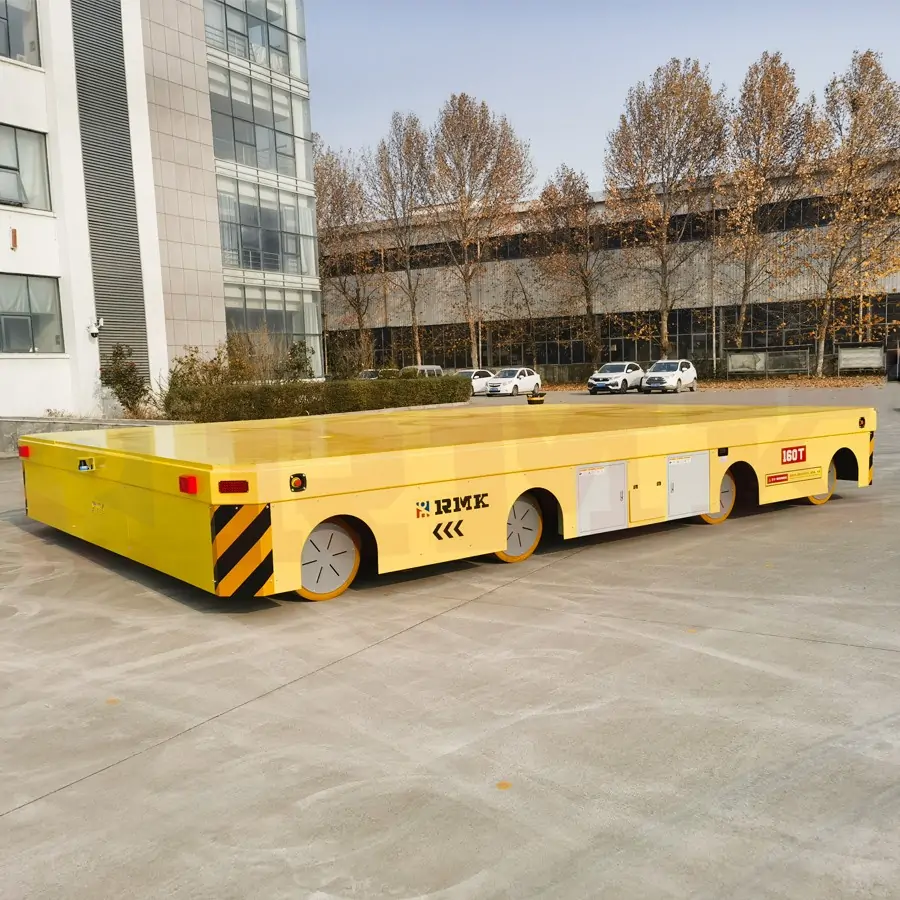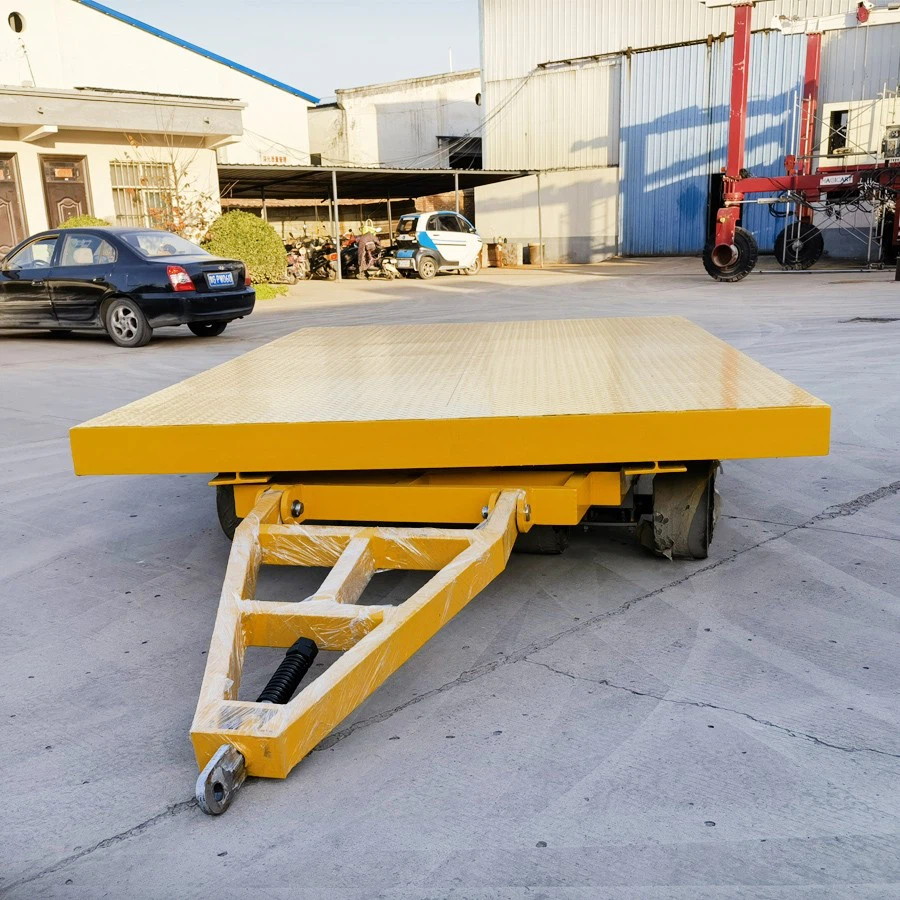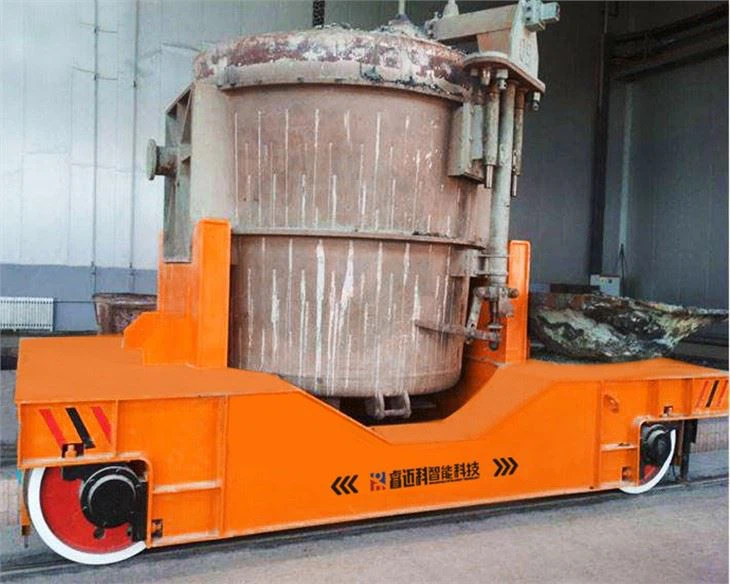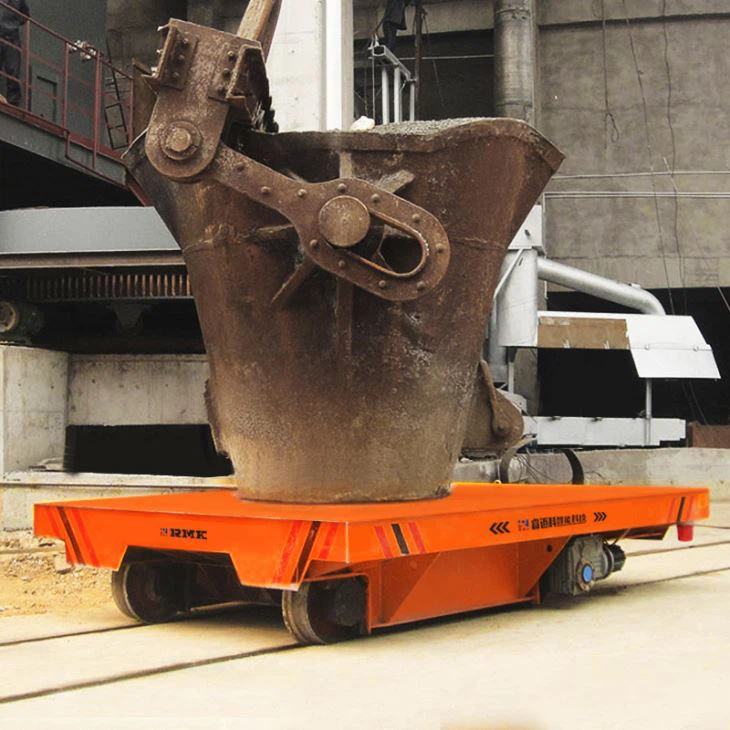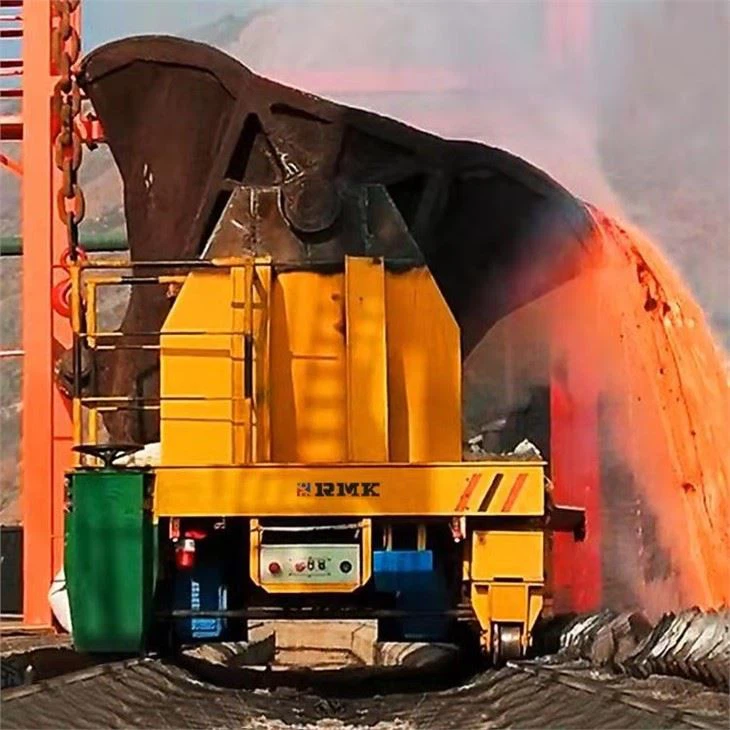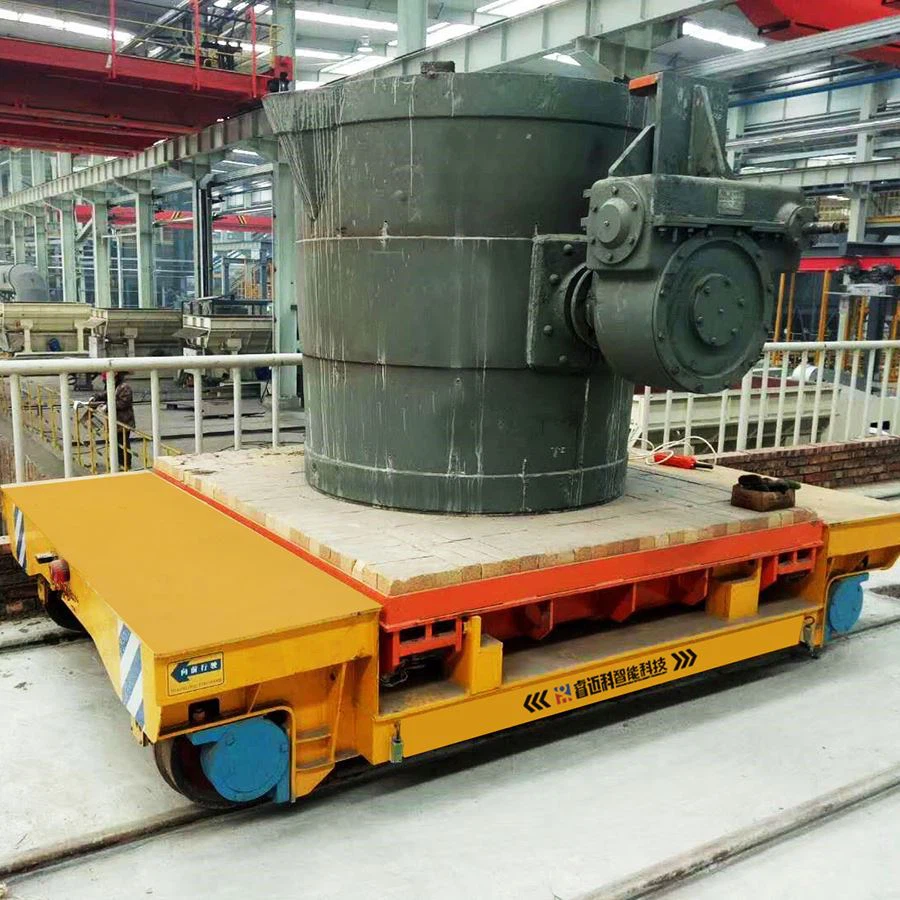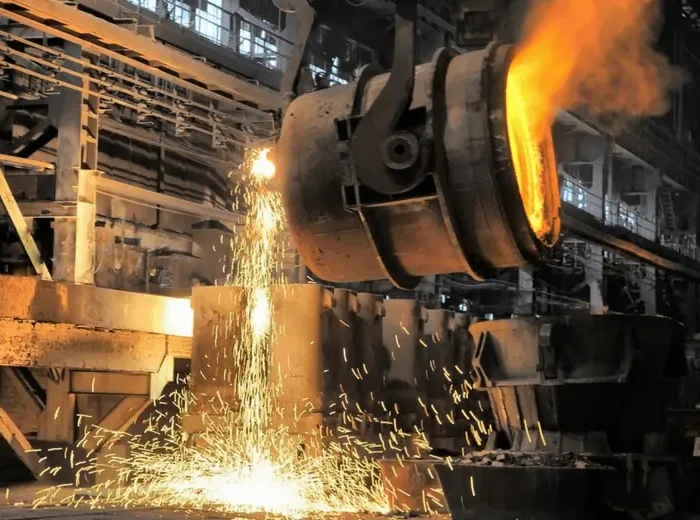
In the steel foundry industry, transfer carts provide efficient, safe, and customizable heavy-duty material handling solutions. It is widely used in the efficient transportation of high-temperature molten metals, sand-molded castings, and heavy-duty cast components, covering multiple critical stages from smelting, casting, cooling, to post-processing. Based on process requirements, the equipment has a rated load capacity ranging from 30 to 300 tons, capable of handling the transportation of steel ladles, iron ladles, large castings, or sand mold frames of various specifications.
Recommended Products
The transfer cart can be equipped with rail power supply, cable reel power supply, or battery power supply systems according to the usage scenario, and supports remote wireless remote control and centralized automatic dispatching control. At the same time, in response to the ground space limitations of smelting sites, we can also provide multi-functional customized solutions such as turntables, universal steering, and lifting platforms to effectively solve the transportation difficulties of small turning radii and cramped spaces.
Application
Molten Metal Ladles
Used to transport containers filled with high-temperature molten steel or iron from the smelting furnace to the pouring area.
Rough Castings
Used to transport large steel castings that have been poured but not yet machined, such as housings, brackets, and rollers, from the cooling area to the cleaning or machining area.
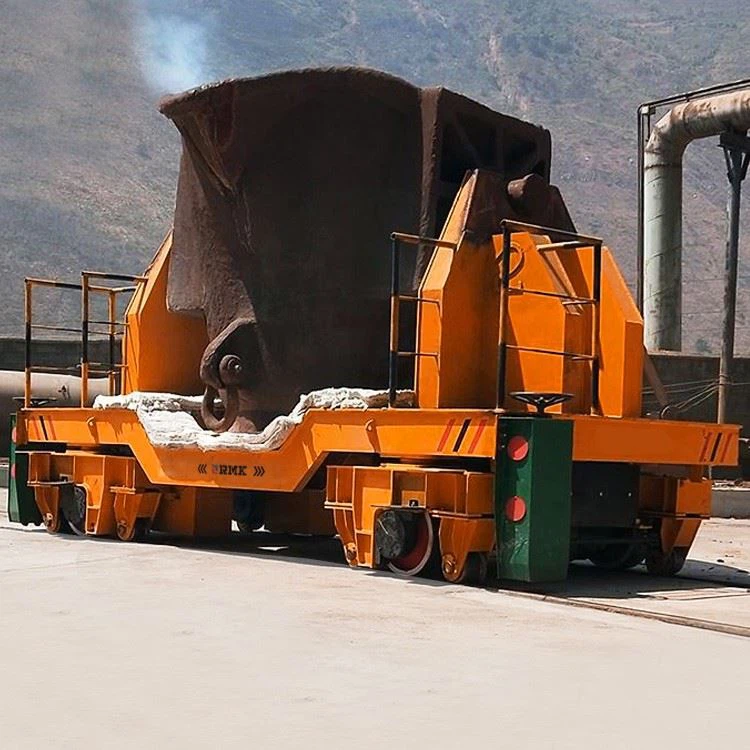
Tundish / Pouring Assemblies
Key components in the casting process used to control the flow and distribution of molten steel, their maintenance and replacement are often carried out using transfer carts for transportation and loading/unloading.
Sand Molds / Resin Molds
Used to transport heavy mold structures used to transport castings, typically large in size and weight.
Slag Pots / Cooling Slag Containers
Used to transport high-temperature slag or by-products generated during the melting process, these containers must have high-temperature resistance and corrosion resistance, and support remote operation to enhance operational safety.
Cases Show
The platform structure of the transfer cart can also be equipped with V-shaped frames, positioning rails, clamping devices, or flipping mechanisms as needed, making it particularly suitable for operations such as ladle transportation, sand mold flipping, and casting assembly.
Advantages
In the foundry industry, transfer carts typically operate in high-temperature, heavy-load, and complex working conditions. Therefore, they need to have the following six key functional features and advantages.
High-temperature resistant structural design
The vehicle body is made of heat-resistant steel and high-temperature cables, with insulation layers installed in key areas to ensure stable operation in high-temperature areas (such as near steel ladles or hot castings) without deformation or failure.
High-Capacity Load-Bearing Ability
Supports custom load-bearing capacities ranging from 30 tons to over 300 tons, enabling safe handling of heavy castings, molten steel ladles, sand molds, and other materials, meeting the high-load requirements of the metallurgy industry.
Safety control system
Equipped with emergency braking, limit switches, audible and visual alarms, and splash protection features to effectively reduce operational risks in high-temperature and high-risk environments.
Flexible power supply options
Can be powered via track power supply, cable reels, drag chain cables, or batteries, supporting long-distance, continuous, or trackless operation.
Automation and Remote Control Support
Can be integrated with intelligent functions such as wireless remote control, PLC systems, and laser navigation to achieve precise positioning and remote scheduling, enhancing the automation level of workshop material handling.
Customizable Platform Structure
Can be equipped with V-shaped frames (suitable for steel ladles/coils), grooves, clamps, or hydraulic lifting mechanisms based on material type, ensuring stable and reliable handling of special casting materials during transportation.
Customized Intelligent Material Handling Solutions
To ensure that a customized transfer cart fits your needs perfectly, please provide the following details:
- Load Capacity: _____ tons (1~500 ton)
- Table Size: _____ × _____ mm/m (e.g., 1500×3000)
- Power Options:
- ☐ Lead-acid ☐ Lithium-ion ☐ Other: _____
- ☐ Cable: _____V/_____A
- ☐ Standard 380V/50Hz/3-phase
- Cargo Details:
- Type: _____ (e.g., steel coils, machinery)
- Special Needs: _____ (e.g., anti-slip, corrosion-proof)
- Optional Features:
- ☐ Emergency stop ☐ Anti-collision sensors
- ☐ Rail guides ☐ Lifting mechanism ☐ Remote control

